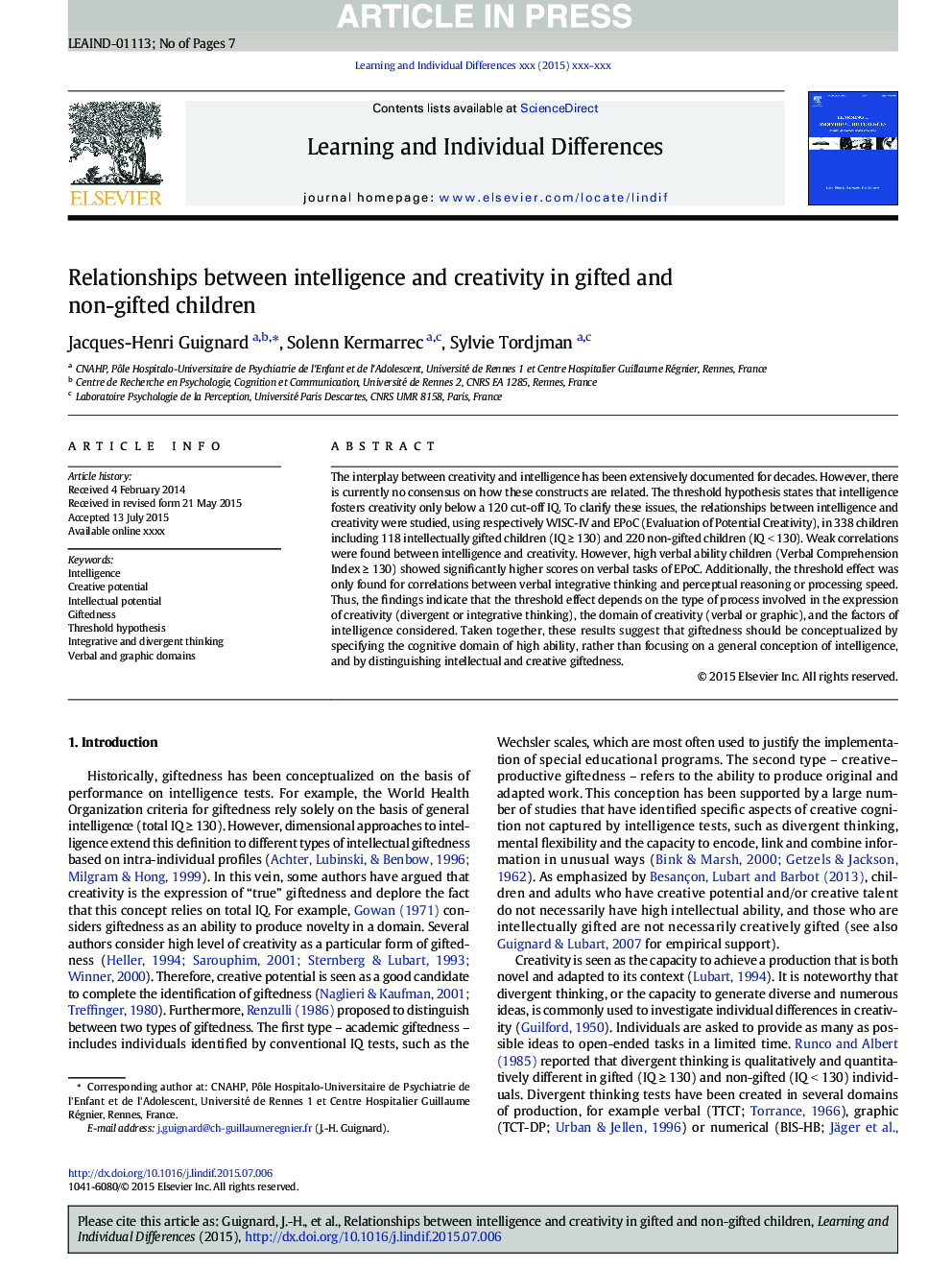| کد مقاله | کد نشریه | سال انتشار | مقاله انگلیسی | نسخه تمام متن |
|---|---|---|---|---|
| 4940087 | 1436371 | 2016 | 7 صفحه PDF | دانلود رایگان |
عنوان انگلیسی مقاله ISI
Relationships between intelligence and creativity in gifted and non-gifted children
ترجمه فارسی عنوان
روابط بین هوش و خلاقیت در کودکان باتجربه و غیرتعدادی
دانلود مقاله + سفارش ترجمه
دانلود مقاله ISI انگلیسی
رایگان برای ایرانیان
کلمات کلیدی
هوش پتانسیل خلاقانه، پتانسیل فکری، جوایز، فرضیه آستانه، تفکر یکپارچه و واگرا، حوزه های کلامی و گرافیک،
موضوعات مرتبط
علوم انسانی و اجتماعی
روانشناسی
روانشناسی رشد و آموزشی
چکیده انگلیسی
The interplay between creativity and intelligence has been extensively documented for decades. However, there is currently no consensus on how these constructs are related. The threshold hypothesis states that intelligence fosters creativity only below a 120 cut-off IQ. To clarify these issues, the relationships between intelligence and creativity were studied, using respectively WISC-IV and EPoC (Evaluation of Potential Creativity), in 338 children including 118 intellectually gifted children (IQ â¥Â 130) and 220 non-gifted children (IQ < 130). Weak correlations were found between intelligence and creativity. However, high verbal ability children (Verbal Comprehension Index â¥Â 130) showed significantly higher scores on verbal tasks of EPoC. Additionally, the threshold effect was only found for correlations between verbal integrative thinking and perceptual reasoning or processing speed. Thus, the findings indicate that the threshold effect depends on the type of process involved in the expression of creativity (divergent or integrative thinking), the domain of creativity (verbal or graphic), and the factors of intelligence considered. Taken together, these results suggest that giftedness should be conceptualized by specifying the cognitive domain of high ability, rather than focusing on a general conception of intelligence, and by distinguishing intellectual and creative giftedness.
ناشر
Database: Elsevier - ScienceDirect (ساینس دایرکت)
Journal: Learning and Individual Differences - Volume 52, December 2016, Pages 209-215
Journal: Learning and Individual Differences - Volume 52, December 2016, Pages 209-215
نویسندگان
Jacques-Henri Guignard, Solenn Kermarrec, Sylvie Tordjman,
